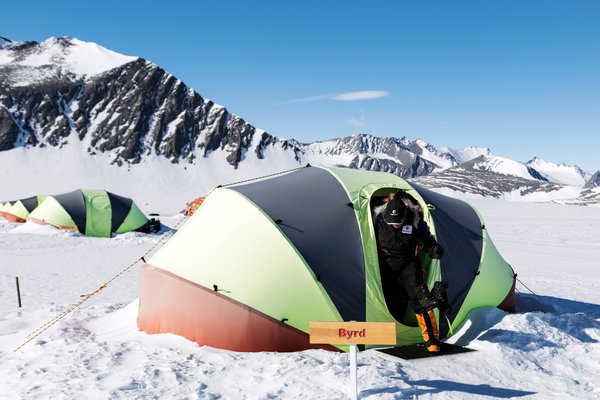Tweets
- Tweets, current page.
- Tweets & replies
- Media
You blocked @timeanddate
Are you sure you want to view these Tweets? Viewing Tweets won't unblock @timeanddate
-
The
#FirstQuarterMoon rises around midday and sets around midnight. This is the opposite of a#ThirdQuarterMoon, which rises in the middle of the night and sets in the middle of the day. https://www.timeanddate.com/astronomy/moon/first-quarter.html … Image: ©http://iStockphoto.com/Demetri2K pic.twitter.com/ynadbBTt6I Show this threadThanks. Twitter will use this to make your timeline better. UndoUndo
Show this threadThanks. Twitter will use this to make your timeline better. UndoUndo -
Look up for a
#HalfMoon. On December 11 at 01:35 UTC, the#Moon will be at First Quarter and appear 50% illuminated. https://www.timeanddate.com/astronomy/moon/first-quarter.html … Image: ©http://iStockphoto.com/Demetri2K pic.twitter.com/4Mi06jOQmJ Show this threadThanks. Twitter will use this to make your timeline better. UndoUndo
Show this threadThanks. Twitter will use this to make your timeline better. UndoUndo -
Choose between different designs and formats and print the calendar at home and get a head start to the next year! Try it out: https://www.timeanddate.com/calendar/create.html … Image:©http://timeanddate.com
#printablecalendar#calendar2022#newyear2022pic.twitter.com/ADR5y09trT Show this threadThanks. Twitter will use this to make your timeline better. UndoUndo
Show this threadThanks. Twitter will use this to make your timeline better. UndoUndo -
Looking for an easy-to-use calendar to make your 2022 a productive year? Look no further than our Printable Calendars. Customize by adding your special events, public holidays & religious observances for your country, & even Moon Phases. https://www.timeanddate.com/calendar/create.html …pic.twitter.com/tUGRGrV0Jj
 Show this threadThanks. Twitter will use this to make your timeline better. UndoUndo
Show this threadThanks. Twitter will use this to make your timeline better. UndoUndo -
This image from our Night Sky Map shows the view from New York City at 5 pm local time on December 6. Find the planets and the Moon in your night sky: https://test.timeanddate.com/astronomy/night/ …pic.twitter.com/JgZSE648xk
 Show this threadThanks. Twitter will use this to make your timeline better. UndoUndo
Show this threadThanks. Twitter will use this to make your timeline better. UndoUndo -
Over the course of the next few nights, the Moon will sweep by Saturn and Jupiter: one year on from their famous Christmas-time conjunction of 2020, the solar system’s two biggest
#planets are still close together in the sky. https://test.timeanddate.com/astronomy/night/ …pic.twitter.com/uGl8cAMg9k Show this threadThanks. Twitter will use this to make your timeline better. UndoUndo
Show this threadThanks. Twitter will use this to make your timeline better. UndoUndo -
We aren't doing a hosted live show, but we'll have updates on our live blog from 05:30 UTC. https://www.timeanddate.com/live/eclipse-solar-2021-december-4 …
 from Union Glacier Camp ©Christopher Michel/ALEpic.twitter.com/4KR9kbMORh
from Union Glacier Camp ©Christopher Michel/ALEpic.twitter.com/4KR9kbMORh Show this threadThanks. Twitter will use this to make your timeline better. UndoUndo
Show this threadThanks. Twitter will use this to make your timeline better. UndoUndo -
At Union Glacier Camp, totality takes place at 07:44:55 UTC. Other research stations across the icy continent will experience a partial solar eclipse. https://www.timeanddate.com/live/eclipse-solar-2021-december-4 …
 from Union Glacier Camp ©Christopher Michel/ALEpic.twitter.com/HHCMFmgPKb
from Union Glacier Camp ©Christopher Michel/ALEpic.twitter.com/HHCMFmgPKb Show this threadThanks. Twitter will use this to make your timeline better. UndoUndo
Show this threadThanks. Twitter will use this to make your timeline better. UndoUndo -
It's happening! A total solar eclipse will soon cross Antarctica and the surrounding region from 05:29 to 09:37 UTC. Only a lucky few (including a colony of Emperor Penguins) will see the eclipse. https://www.timeanddate.com/live/eclipse-solar-2021-december-4 …
 from Union Glacier Camp ©Christopher Michel/ALEpic.twitter.com/ll0EzXc0bl
from Union Glacier Camp ©Christopher Michel/ALEpic.twitter.com/ll0EzXc0bl Show this threadThanks. Twitter will use this to make your timeline better. UndoUndo
Show this threadThanks. Twitter will use this to make your timeline better. UndoUndo -
If you're not in Antarctica, you can still follow the eclipse with us. We’re not doing a hosted live show, but we will have updates on our live blog from 05:30 UTC. https://www.timeanddate.com/live/eclipse-solar-2021-december-4 …pic.twitter.com/g4YTlklvD1
 Show this threadThanks. Twitter will use this to make your timeline better. UndoUndo
Show this threadThanks. Twitter will use this to make your timeline better. UndoUndo -
John tells us: 'The team here is really excited about being able to witness the eclipse on Saturday morning. During the summer, the Sun never sets below the horizon so even at 4 am we should see the effect of the eclipse.' https://www.timeanddate.com/eclipse/solar/2021-december-4 …pic.twitter.com/IM08w9U4SG
 Show this threadThanks. Twitter will use this to make your timeline better. UndoUndo
Show this threadThanks. Twitter will use this to make your timeline better. UndoUndo -
Tomorrow, December 4, there's a total solar eclipse across Antarctica. John Law, an Antarctic Atmospheric Scientist at Rothera Research Station, is one of the lucky few to be able to see the eclipse, if the clouds stay away, that is. https://www.timeanddate.com/eclipse/solar/2021-december-4 …pic.twitter.com/8IOm6S4JKg
 Show this threadThanks. Twitter will use this to make your timeline better. UndoUndo
Show this threadThanks. Twitter will use this to make your timeline better. UndoUndo -
And to take your minds off the dark cold days (or the upcoming sweltering summer), here's a cool fact about Dec 2021: the first 9 days of the month are all
#palindromedays when written in mm-d-yy format! https://www.timeanddate.com/date/palindrome-day.html … ©http://bigstockphoto.com/Juriahah pic.twitter.com/AbV6bQ92my
©http://bigstockphoto.com/Juriahah pic.twitter.com/AbV6bQ92my Show this threadThanks. Twitter will use this to make your timeline better. UndoUndo
Show this threadThanks. Twitter will use this to make your timeline better. UndoUndo -
It is December 1 today! It's officially the start of meteorological winter in many Northern Hemisphere countries. And the start of meteorological summer in Southern Hemisphere countries. https://www.timeanddate.com/calendar/months/december.html …
 ©http://bigstockphoto.com/Juriahah pic.twitter.com/75SCKIl8Tr
©http://bigstockphoto.com/Juriahah pic.twitter.com/75SCKIl8Tr Show this threadThanks. Twitter will use this to make your timeline better. UndoUndo
Show this threadThanks. Twitter will use this to make your timeline better. UndoUndo -
On Nov 27 (exactly 12:27 UTC) the
#Moon will reach its#ThirdQuarterPhase. Tidal ranges are smallest around#QuarterMoons, because the gravitational forces from Moon &#Sun work against each other to produce#neaptides. https://www.timeanddate.com/astronomy/moon/third-quarter.html … ©http://timeanddate.com .pic.twitter.com/ideMGIjaTO
©http://timeanddate.com .pic.twitter.com/ideMGIjaTO Thanks. Twitter will use this to make your timeline better. UndoUndo
Thanks. Twitter will use this to make your timeline better. UndoUndo -
One month until
#Christmas !
Count down to the festive season with us here at http://timeanddate.com
https://www.timeanddate.com/countdown/christmas?p0=179&ud=2&font=cursive&csz=1 …
Make your own countdowns to special life events
https://www.timeanddate.com/countdown/create …
!
Count down to the festive season with us here at http://timeanddate.com
https://www.timeanddate.com/countdown/christmas?p0=179&ud=2&font=cursive&csz=1 …
Make your own countdowns to special life events
https://www.timeanddate.com/countdown/create …
 ©http://iStockphoto.com/Imgorthandd pic.twitter.com/VkefVvSJTu
©http://iStockphoto.com/Imgorthandd pic.twitter.com/VkefVvSJTu Thanks. Twitter will use this to make your timeline better. UndoUndo
Thanks. Twitter will use this to make your timeline better. UndoUndo -
It will help us answer questions such as why is the solar corona, the Sun’s outer atmosphere that becomes visible during a total solar eclipse, millions of degrees hotter than the Sun’s surface? All about our star: https://www.timeanddate.com/astronomy/sun/about … Image: ESA/NASApic.twitter.com/NReXNr7Q8u
 Show this threadThanks. Twitter will use this to make your timeline better. UndoUndo
Show this threadThanks. Twitter will use this to make your timeline better. UndoUndo -
Why hazardous? Because Earth is surrounded by space debris, ranging from abandoned rockets to tiny flecks of paint, all of which pose a risk to spacecraft. Solar Orbiter is on a mission to study the Sun https://www.timeanddate.com/astronomy/sun/about …. Image: ESA/NASApic.twitter.com/JhRSFKvfiB
 Show this threadThanks. Twitter will use this to make your timeline better. UndoUndo
Show this threadThanks. Twitter will use this to make your timeline better. UndoUndo -
Good luck to our friends at the ESA - European Space Agency! At 04:30 UTC on November 27, their Solar Orbiter spacecraft will perform a hazardous flyby of Earth—passing just 460 km above North Africa and the Canary Islands. https://www.timeanddate.com/astronomy/sun/about … Image: ESA/NASApic.twitter.com/f2AXKnRThA
 Show this threadThanks. Twitter will use this to make your timeline better. UndoUndo
Show this threadThanks. Twitter will use this to make your timeline better. UndoUndo -
Among those best positioned to see totality will be the inhabitants of the Gould Bay Emperor Penguin Colony in Antarctica. https://www.timeanddate.com/eclipse/solar/2021-december-4 … ©http://iStock.com/flammulated pic.twitter.com/Xme059rreQ
 Show this threadThanks. Twitter will use this to make your timeline better. UndoUndo
Show this threadThanks. Twitter will use this to make your timeline better. UndoUndo
Loading seems to be taking a while.
Twitter may be over capacity or experiencing a momentary hiccup. Try again or visit Twitter Status for more information.


